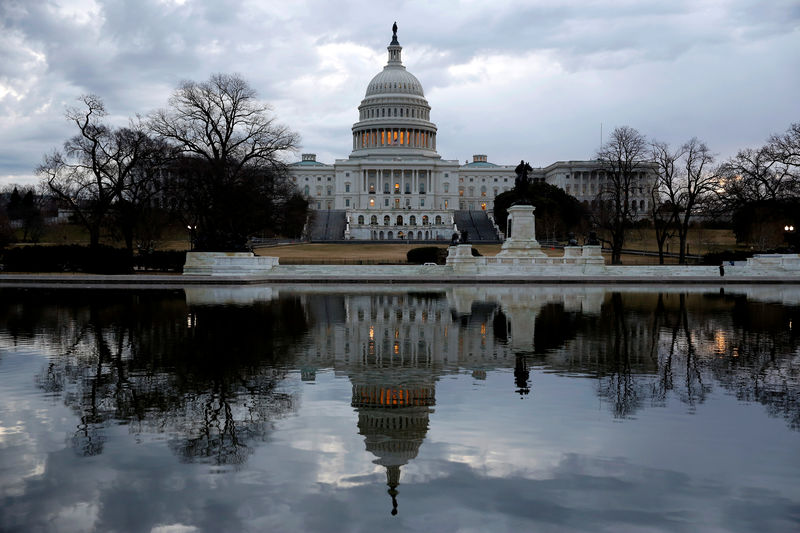Investing.com - Here are the top five things you need to know in financial markets on Friday, March 16:
1. Markets keep focus on political turmoil, tariff preparations
Political upheaval in the White House continued to keep markets on their toes after a Washington Post report that national security adviser H.R. McMaster would be next on the list of those to get the boot.
The news initially sent U.S. stock futures lower, though speculation had been rampant that it was only a matter of time before McMaster, who had sided with the now former economic adviser Gary Cohn against U.S. President Donald Trump’s tariffs on aluminum and steel, was fired.
However, White House press secretary Sarah Huckabee Sanders later denied the reports after speaking to both the President and McMaster.
“Contrary to reports they have a good working relationship and there are no changes at the NSC,” she said.
Fears that Trump’s plans to implement tariffs would spark a global trade war have made market participants cautious as they watch reactions across the globe.
In the latest news, the European Union Commission was reported by F.A.Z. to be warning EU members against being “too optimistic” that they would receive an exemption from U.S. tariffs on steel and aluminum.
The report indicated that the European trade commissioner Cecilia Malmstrom was seeking to meet with U.S. commerce secretary Wilbur Ross to have discussions on the issue.
2. Slew of data expected to guide trade
Traders looked ahead Friday to a slew of data to be reported throughout the day as they prepared for next week’s monetary policy decision from the Federal Reserve.
Investors will focus on the preliminary reading of consumer sentiment for March from the University of Michigan out at 10:00AM ET (14:00GMT).
Also on the docket, market participants will digest housing data in the form of building permits and housing starts for February, along with industrial production for the same month and Job Openings and Labor Turnover Survey (JOLTS) for the first month of the year.
3. U.S. stocks show little movement
Although stocks closed with mixed signals a day earlier, with the Dow recovering some of the losses from this week’s worries over trade wars, U.S. futures pointed to a flat open on Friday as investors began to switch attention to next week’s policy announcements from the Fed. At 5:51AM ET (9:51GMT), the blue-chip Dow futures slipped 16 points, or 0.06%, S&P 500 futures edged forward 1 point, or 0.03%, while the Nasdaq 100 futures dropped 2 points, or 0.02%.
Elsewhere, European stocks were trading higher on Friday, supported by M&A news, although the pan European Stoxx 600 was still on track for slight weekly losses caused by trade war fears this week.
Earlier, Asian shares closed lower on Friday, as the reports surrounding McCaster’s possible firing spawned risk-adverse trade and continuing worries over the global trade picture caused investors to remain cautious.
4. China’s U.S. Treasury holdings fall to 8 month low
China’s holdings of U.S. Treasuries fell to the lowest level since July on concerns that a potential increase in inflation would force the Fed to up its pace of rate hikes.
China’s portfolio of U.S. bonds, notes and bills fell to $1.17 trillion in January from $1.18 trillion a month earlier, according to a report from the Treasury Department data released late Thursday.
China still remains the largest holder of U.S. dept, ahead of Japan who the Treasure Department said was holding $1.07 trillion.
5. Oil heads for weekly loss as output worries continue to pressure
Though oil prices were tracking higher in early trade on Friday, they were still on track for a weekly loss as concerns over the global supply glut remained in force due the incessant increase in U.S. production.
U.S. crude oil futures rose 0.31% to $61.38 at 5:51AM ET (9:51GMT), Friday, while Brent oil gained 0.20% to $65.25.
Even with Friday's gains, the U.S. benchmark was on track for weekly losses of around 1%, while the London barrel was off about 0.3%.
Despite the agreement led by Organization of the Petroleum Exporting Countries to curb production this year, increasing U.S. shale production has been offsetting attempts to rebalance the market.
The cartel’s monthly report forecast this week that non-OPEC supply would rise this year to around 1.60 million barrels per day (bpd), compared to the prior estimate of 1.40 million bpd.
